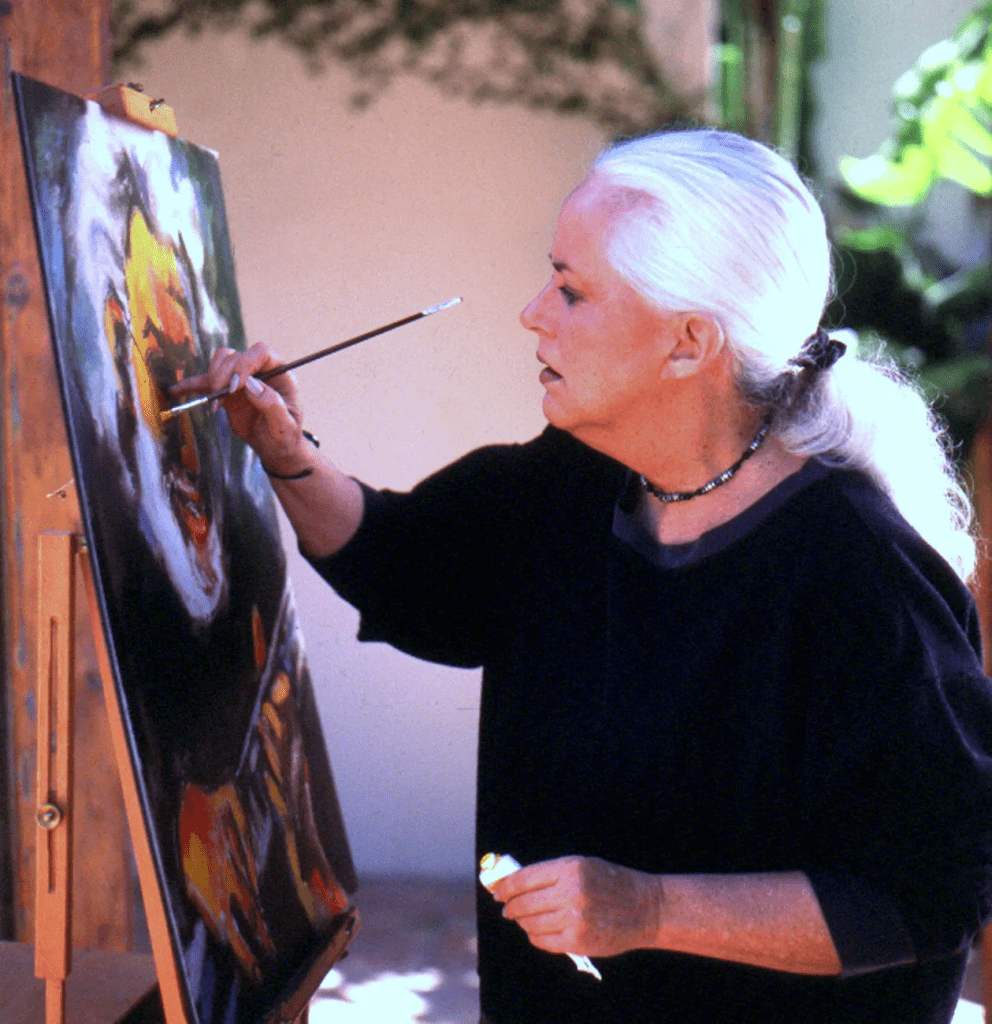
Grace Barnett Wing, famously known as Grace Slick, was born on October 30, 1939, in Evanston, Illinois. Raised in a middle-class family, Slick’s early years were marked by frequent relocations due to her father’s career as an investment banker. Eventually, her family settled in Palo Alto, California, where Grace spent her formative years. This relocation proved significant, as the vibrant cultural environment of California would later influence her artistic pursuits.
Grace attended Castilleja School, a prestigious all-girls institution, before briefly enrolling at Finch College in New York City and later at the University of Miami. However, the structured world of academia didn’t resonate with her free-spirited personality. Inspired by the burgeoning music scene and driven by her love for folk, rock, and blues, Grace decided to pursue a career in music—a decision that would change the landscape of rock forever.
Grace’s entry into the music world began in 1965 when she joined The Great Society, a folk-rock band based in San Francisco. The band, founded by her then-husband Jerry Slick and his brother Darby Slick, became a fixture in the city’s burgeoning music scene. Grace quickly established herself as the band’s standout member, thanks to her commanding stage presence and distinct contralto voice.
It was during her time with The Great Society that Grace penned the iconic track “White Rabbit,” a song inspired by Lewis Carroll’s Alice in Wonderland and her fascination with psychedelic experiences. She also performed Darby Slick’s composition, “Somebody to Love.” These two songs, though initially performed by The Great Society, would later define her career with Jefferson Airplane.
Despite The Great Society’s growing popularity in the San Francisco music scene, internal tensions and limited commercial success led to the band’s dissolution in 1966. However, this was not an end for Grace—it was the beginning of something far greater.
In late 1966, Grace Slick joined Jefferson Airplane, replacing Signe Toly Anderson as the band’s lead vocalist. Jefferson Airplane, already a prominent name in the San Francisco psychedelic rock scene, found new energy and identity with Grace at the helm. Her powerful voice and magnetic presence became the band’s defining features, helping them achieve national acclaim.

In 1967, Jefferson Airplane released Surrealistic Pillow, an album that solidified their place in rock history. Featuring the groundbreaking tracks “Somebody to Love” and “White Rabbit,” the album became a cultural touchstone of the 1960s counterculture movement. “White Rabbit,” with its dreamlike lyrics and crescendoing melody, captured the spirit of the era, referencing themes of freedom, rebellion, and psychedelic exploration.
Following Surrealistic Pillow, Jefferson Airplane released several successful albums, including After Bathing at Baxter’s (1967), Crown of Creation (1968), and Volunteers (1969). Grace contributed to the band not only as a vocalist but also as a songwriter, penning thought-provoking tracks like “Greasy Heart,” “Lather,” and “We Can Be Together.” Her fearless approach to addressing social and political issues through music cemented her role as a voice of the counterculture movement.
By the early 1970s, Jefferson Airplane began to face internal conflicts and lineup changes, leading to the band’s evolution into Jefferson Starship in 1974. Grace Slick became a cornerstone of this new iteration, which embraced a more mainstream rock sound while retaining elements of their psychedelic roots. With hits like “Miracles,” “Count on Me,” and “Runaway,” Jefferson Starship enjoyed commercial success and expanded their audience.

Grace’s contributions to Jefferson Starship extended beyond her vocal prowess. Her songwriting and artistic vision played a crucial role in shaping the band’s direction. Despite the shift in sound and lineup, Grace’s ability to captivate audiences remained unwavering.
In addition to her work with Jefferson Airplane and Jefferson Starship, Grace Slick pursued a solo career that allowed her to experiment with diverse musical styles. Her 1974 debut solo album, Manhole, showcased her eclectic taste and willingness to push creative boundaries. However, it was her 1981 album, Dreams, that earned her critical acclaim. The album’s title track was nominated for a Grammy Award, demonstrating her ability to succeed as a solo artist.
Grace’s solo career provided her with the freedom to explore her musical identity. Albums like Welcome to the Wrecking Ball! (1981) and Software (1984) highlighted her versatility and commitment to artistic evolution.

Grace Slick’s journey was not without its challenges. During the late 1970s and early 1980s, she struggled with alcoholism, which led to her temporary departure from Jefferson Starship in 1978. However, her resilience and determination brought her back to the band in 1981. Grace’s ability to confront and overcome personal struggles served as a testament to her strength and dedication.
In 1985, Jefferson Starship transitioned into Starship, embracing a more pop-oriented sound. Grace remained an integral part of the group, contributing to chart-topping hits like “We Built This City” and “Nothing’s Gonna Stop Us Now.” Despite the band’s commercial success, Grace ultimately decided to step away from music, retiring from performing after a Jefferson Airplane reunion tour in 1989-1990.
After retiring from music, Grace Slick found a new creative outlet in visual arts. Her paintings, often inspired by surrealism and psychedelic imagery, gained widespread recognition. Grace’s artwork frequently features portraits of her rock contemporaries and scenes from Alice in Wonderland, themes that had been central to her music career. Her transition from music to art exemplified her boundless creativity and passion for self-expression.

Grace Slick’s impact on music and culture is immeasurable. As one of the first prominent female rock vocalists, she broke barriers in a male-dominated industry and inspired generations of female artists to follow their own paths. Her powerful voice, fearless lyrics, and unapologetic attitude made her an icon of the 1960s and 1970s.
Songs like “White Rabbit” and “Somebody to Love” remain timeless classics, symbolizing the rebellious spirit of an era. Grace’s willingness to address social and political issues through her music continues to resonate, reminding us of the transformative power of art.

Grace Slick’s journey is one of boldness, resilience, and artistic exploration. From her early days with The Great Society to her legendary tenure with Jefferson Airplane and Jefferson Starship, she consistently pushed boundaries and redefined what it meant to be a rock artist. Her later work as a painter further cemented her legacy as a multifaceted creative force.
Though she no longer performs, Grace Slick’s influence endures through her music, art, and the countless artists she has inspired. Her story is a reminder that true artistry knows no bounds, and her voice will forever echo as a symbol of freedom, individuality, and change.


